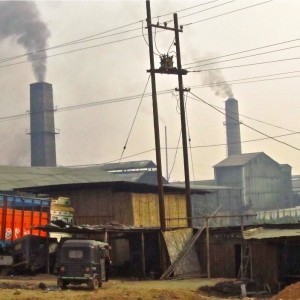Federal Water Tap, January 26: Bureau of Reclamation Releases 2015 California Drought Plan
The Rundown
California drought plan has three goals. India and the United States cooperate on clean energy. Industry and regulators agree to phase out copper brakes while the uranium industry faces new rules to protect groundwater. At the same time, pollution is rising in America’s aquifers. The political crisis in Yemen has environmental roots. A soil moisture satellite prepares for launch.
“Issues such as terrorism and Yemen’s political stability are tied to broader questions regarding the country’s long-term economic and environmental viability.” — Congressional Research Service report on the political crisis in Yemen, the Arab nation south of Saudi Arabia, where the president and cabinet ministers resigned last week under pressure from rebel groups. Sanaa, the capital, is severely depleting its groundwater reserves and 90 percent of the country’s food staples are imported.
By the Numbers
22 percent: U.S. groundwater wells in which at least one pollutant exceeded federal standards for human health (U.S. Geological Survey)
Reports and Studies
America’s Aquifers Growing More Polluted
Farming and urban growth, two forces that are reshaping the land surface, are also changing the chemistry and physical properties of the nation’s aquifers, leading to greater concentrations of natural and manmade pollutants that could persist for decades in essential underground water sources, according to a comprehensive U.S. Geological Survey report.
In the last two decades, according to the report, most of America’s 62 principal aquifers, which supply drinking water to more than 40 percent of the country and provide 55 percent of the nation’s irrigation water, have become dirtier. Two-thirds of the study areas saw an increase in the concentration of dissolved solids and chlorides, which are salts that can harm fish, or nitrates, which cause blood disorders in humans and can be fatal to infants.
The report assessed groundwater before it was treated by municipal water utilities, so detection of pollutants does not necessarily mean they are found in tap water.
News Briefs
California Drought Plan
With January 2015 on track to be California’s driest January on record, Bureau of Reclamation officials are planning for another drought year. The agency that operates dams and canals prioritizes three goals in its drought operations plan:
-
1) meeting human drinking, sanitation, and public safety needs
2) repelling saltwater out of the Sacramento-San Joaquin Delta, the state’s water hub that is home to endangered species, farms, and municipal water intakes
3) maintaining enough cold water in reservoirs to keep migrating salmon alive while protecting other endangered species
The plan will be updated as conditions change.
India Clean Energy
The United States and India agreed to cooperate on clean energy goals. Though similar to the deal signed with China in November because of an emphasis on energy research and development, the India agreement contains no promise of greenhouse gas emissions cuts.
Cutting Water Pollution from Car Brakes
Copper brake linings, as they wear down with a car’s start and stop, produce dust that can be washed into streams where it is toxic to fish. The U.S. Environmental Protection Agency signed an agreement with the U.S. automotive industry to phase out the use of copper in brake pads, an deal based on existing laws in California and Washington.
Infrastructure Support
In a memo, President Obama asked federal agencies to allocate more grant money to local and state governments to support the planning phase of water, sewer, road, and transport projects. The planning phase includes project design, permitting, and technical assessments.
Uranium Regulations
The U.S. Environmental Protection Agency is proposing new technical standards for in-situ recovery (ISR), an extraction technique that has become the dominant method for producing uranium from underground ores. The standards, which require longer monitoring of wells after production stops, are designed to protect groundwater supplies from contamination and detect contamination from radioactive materials sooner.
ISR extracts uranium by using two wells. A solution that dissolves the uranium is pumped down one well and pumped out of the adjacent well. Public comments on the proposed rule should be sent to a-and-r-docket@epa.gov by April 27.
On the Radar
Water Satellite
On January 29 from Vandenberg Air Force Base in California, NASA will launch a satellite that will lead to new understanding of the Earth’s water cycle. A three-year mission, the Soil Moisture Active Passive satellite will measure the water content of the top layers of soil as well as helping scientists understand and forecast droughts and floods.
Senate LNG Hearing
On January 29, the Energy and Natural Resources Committee will discuss legislation on the export of liquefied natural gas. Federal regulators have approved five onshore export terminals, four of which are under construction, and at least 14 others have been proposed.
Federal Water Tap is a weekly digest spotting trends in U.S. government water policy. To get more water news, follow Circle of Blue on Twitter and sign up for our newsletter.
Brett writes about agriculture, energy, infrastructure, and the politics and economics of water in the United States. He also writes the Federal Water Tap, Circle of Blue’s weekly digest of U.S. government water news. He is the winner of two Society of Environmental Journalists reporting awards, one of the top honors in American environmental journalism: first place for explanatory reporting for a series on septic system pollution in the United States(2016) and third place for beat reporting in a small market (2014). He received the Sierra Club’s Distinguished Service Award in 2018. Brett lives in Seattle, where he hikes the mountains and bakes pies. Contact Brett Walton






Leave a Reply
Want to join the discussion?Feel free to contribute!